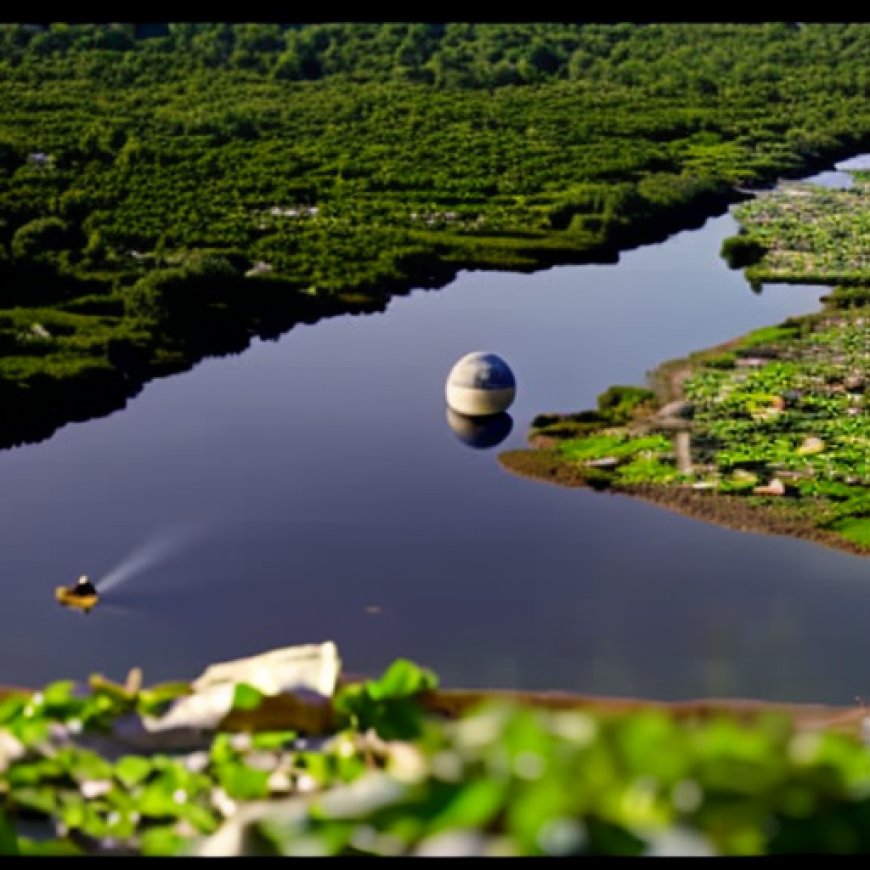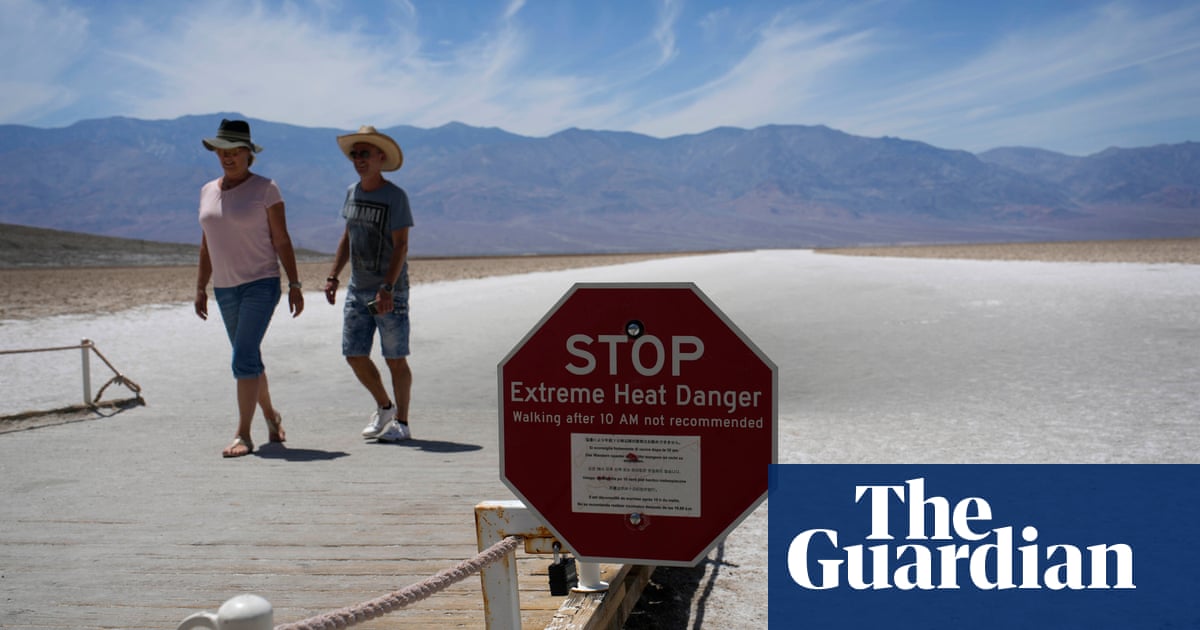Why aren’t we more scared of the climate crisis? It’s complicated
Why aren’t we more scared of the climate crisis? It’s complicated The Guardian


Sustainable Development Goals (SDGs) and the Climate Crisis

The Climate Crisis and its Impact on the United States
This summer in the United States, millions of people have experienced the intense effects of the climate crisis. The “heat dome” that has gripped the south-west for the past three weeks is expanding into the south-eastern states. Catastrophic flooding in the north-east has claimed lives and wiped out farmers’ crops. And the worst wildfire season in Canadian history has not only caused tens of thousands of Indigenous people to be displaced, but the accompanying smoke has also billowed over into the north-eastern and midwest US, setting records for poor air quality. In many cases, these events have caused irreparable damage and trauma to those directly affected, and can certainly feel like they’re encroaching on those people on the periphery. And yet despite the fact that we’re living through a climate disaster, most Americans aren’t cowering in fear every day about the future of our planet. There’s a psychological reason for that.
The Psychological Response to the Climate Crisis
For one, the climate crisis is a much lower priority for Americans than other national issues, such as the economy and healthcare costs. That isn’t to say that we aren’t concerned: two-thirds of Americans say they are at least “somewhat worried” about global warming, while 30% are “very worried”, per a Yale University survey. But because of the nature of the way that many humans experience fear, connecting this emotion to something as vast and complex as the climate crisis is difficult. According to Brian Lickel, a social psychologist who researches human responses to threats, we aren’t designed to remain in a high state of fear for long. “A very fundamental feature of the normal kind of expected emotional processing is hedonic adaptation,” he said. “Our emotion system is designed to be labile, to go up or have certain responses, but then to not stick there.”
The emotional response to the climate crisis – even if we feel fearful during an episode of wildfire smoke or flooding – is similar to what many people who live in war zones may experience, Lickel said. While at first, the threat of bombs and attacks are imminent and extremely frightening, eventually those who remain in these areas adapt somewhat to a life in which the threat becomes just another thing to deal with daily. “If they’re not escalating or the nature of the threat’s not changing,” Lickel said, “it is to be expected that the felt emotion is going to go down.”
Though the climate crisis is altering our planet rapidly on a geologic time scale, on a human one, changes are happening relatively slowly. That means that even if we see record-setting temperatures or experience our first indoors-due-to-smoke-days, those occurrences will become a new normal within the timespan of our lives. “I’m skeptical that there is going to be an event that’s going to catalyze us more than any of the things that have already happened,” Lickel said.
Adapting to the Climate Crisis
Instead, humans tend to adapt to our stressors, which happens in one of two ways, according to Susan Clayton, a psychologist who studies the relationship between humans and nature. When faced with a fear, for instance, Clayton told me that there are two things we can address: the situation or our reaction to the situation. Since the climate crisis is not something we can deal with in the moment, and most people don’t even understand it fully, we often choose to ignore it as a way to protect our emotional selves. “We’re really, really good at avoiding things that bother us in many cases,” she said. “It’s denial.”
However, as more of the weather events we are seeing this summer affect a larger number of people, that denial might be harder to maintain. “You do find that the more people have direct experience of climate change the more they are able to perceive it as a risk,” Clayton said. “It’s kind of hard to engage in denial after your own house is burned down or gets flooded.” In her 2019 research surveying a sample of some 200 Americans, Clayton found that up to 20% said that their anxiety about the climate crisis is so bad that it impairs their ability to function normally, meaning they lose sleep or the ability to work or socialize normally. One part of the discussion that tends to come up, though, especially among young people, is the concern that others aren’t worrying enough. Two-thirds of Americans say they rarely or never discuss the climate crisis with family and friends, according to the Yale survey. Clayton says this is likely also due to how humans process and internalize fear privately: “You think the scarier it is, the more we should talk about it. In fact, it’s often the reverse. It’s too scary to talk about.” However, there may be an ironic upside to more people experiencing the effects of the climate crisis directly, she said, in that others who were already fearful won’t feel so isolated.
Motivating Action in the Face of the Climate Crisis
The question of whether humans are scared enough of the climate crisis might be the wrong one to ask altogether, though, according to Lickel. That’s because fear isn’t always the best motivating factor for action. The changes we need to make as a species to address the climate crisis are huge and logistical, so they probably have nothing to do with any one person’s individual fear response. “Fear appeals can be effective for things like cigarette smoking, if people know what they can do to address the threat,” Lickel said. But the huge, slow-moving, complex issue of the climate crisis doesn’t have a lot of answers on the individual level. Most of us feel – and really are – pretty helpless.
Instead of spiraling, L
SDGs, Targets, and Indicators Analysis
1. Which SDGs are addressed or connected to the issues highlighted in the article?
- SDG 13: Climate Action
The article discusses the intense effects of the climate crisis, such as heatwaves, flooding, and wildfires. These issues are directly related to climate change, which is the focus of SDG 13.
2. What specific targets under those SDGs can be identified based on the article’s content?
- Target 13.1: Strengthen resilience and adaptive capacity to climate-related hazards and natural disasters.
- Target 13.2: Integrate climate change measures into national policies, strategies, and planning.
- Target 13.3: Improve education, awareness-raising, and human and institutional capacity on climate change mitigation, adaptation, impact reduction, and early warning.
- Target 13.b: Promote mechanisms for raising capacity for effective climate change-related planning and management.
The article highlights the need to address the impacts of climate change, strengthen resilience, and integrate climate change measures into policies and planning. It also emphasizes the importance of education and awareness on climate change and the need to enhance capacity for effective planning and management.
3. Are there any indicators mentioned or implied in the article that can be used to measure progress towards the identified targets?
- Indicator 13.1.1: Number of deaths, missing persons, and directly affected persons attributed to disasters per 100,000 population.
- Indicator 13.2.1: Number of countries that have integrated mitigation, adaptation, impact reduction, and early warning into primary, secondary, and tertiary curricula.
- Indicator 13.3.1: Number of countries that have communicated the strengthening of institutional, systemic, and individual capacity-building to implement adaptation, mitigation, and technology transfer.
- Indicator 13.b.1: Number of least developed countries and small island developing states that are receiving specialized support, and amount of support, including finance, technology, and capacity-building, for mechanisms for raising capacities for effective climate change-related planning and management.
The article mentions the number of deaths and affected persons due to disasters caused by climate-related hazards as an indicator of progress towards strengthening resilience (Target 13.1). It also implies the need to measure the integration of climate change education into curricula (Indicator 13.2.1) and the communication of capacity-building efforts (Indicator 13.3.1). Additionally, it suggests measuring the support provided to least developed countries and small island developing states for climate change planning and management (Indicator 13.b.1).
4. Table: SDGs, Targets, and Indicators
| SDGs | Targets | Indicators |
|---|---|---|
| SDG 13: Climate Action | Target 13.1: Strengthen resilience and adaptive capacity to climate-related hazards and natural disasters. | Indicator 13.1.1: Number of deaths, missing persons, and directly affected persons attributed to disasters per 100,000 population. |
| SDG 13: Climate Action | Target 13.2: Integrate climate change measures into national policies, strategies, and planning. | Indicator 13.2.1: Number of countries that have integrated mitigation, adaptation, impact reduction, and early warning into primary, secondary, and tertiary curricula. |
| Target 13.3: Improve education, awareness-raising, and human and institutional capacity on climate change mitigation, adaptation, impact reduction, and early warning. | Indicator 13.3.1: Number of countries that have communicated the strengthening of institutional, systemic, and individual capacity-building to implement adaptation, mitigation, and technology transfer. | |
| Target 13.b: Promote mechanisms for raising capacity for effective climate change-related planning and management. | Indicator 13.b.1: Number of least developed countries and small island developing states that are receiving specialized support, and amount of support, including finance, technology, and capacity-building, for mechanisms for raising capacities for effective climate change-related planning and management. |
Behold! This splendid article springs forth from the wellspring of knowledge, shaped by a wondrous proprietary AI technology that delved into a vast ocean of data, illuminating the path towards the Sustainable Development Goals. Remember that all rights are reserved by SDG Investors LLC, empowering us to champion progress together.
Source: theguardian.com

Join us, as fellow seekers of change, on a transformative journey at https://sdgtalks.ai/welcome, where you can become a member and actively contribute to shaping a brighter future.







